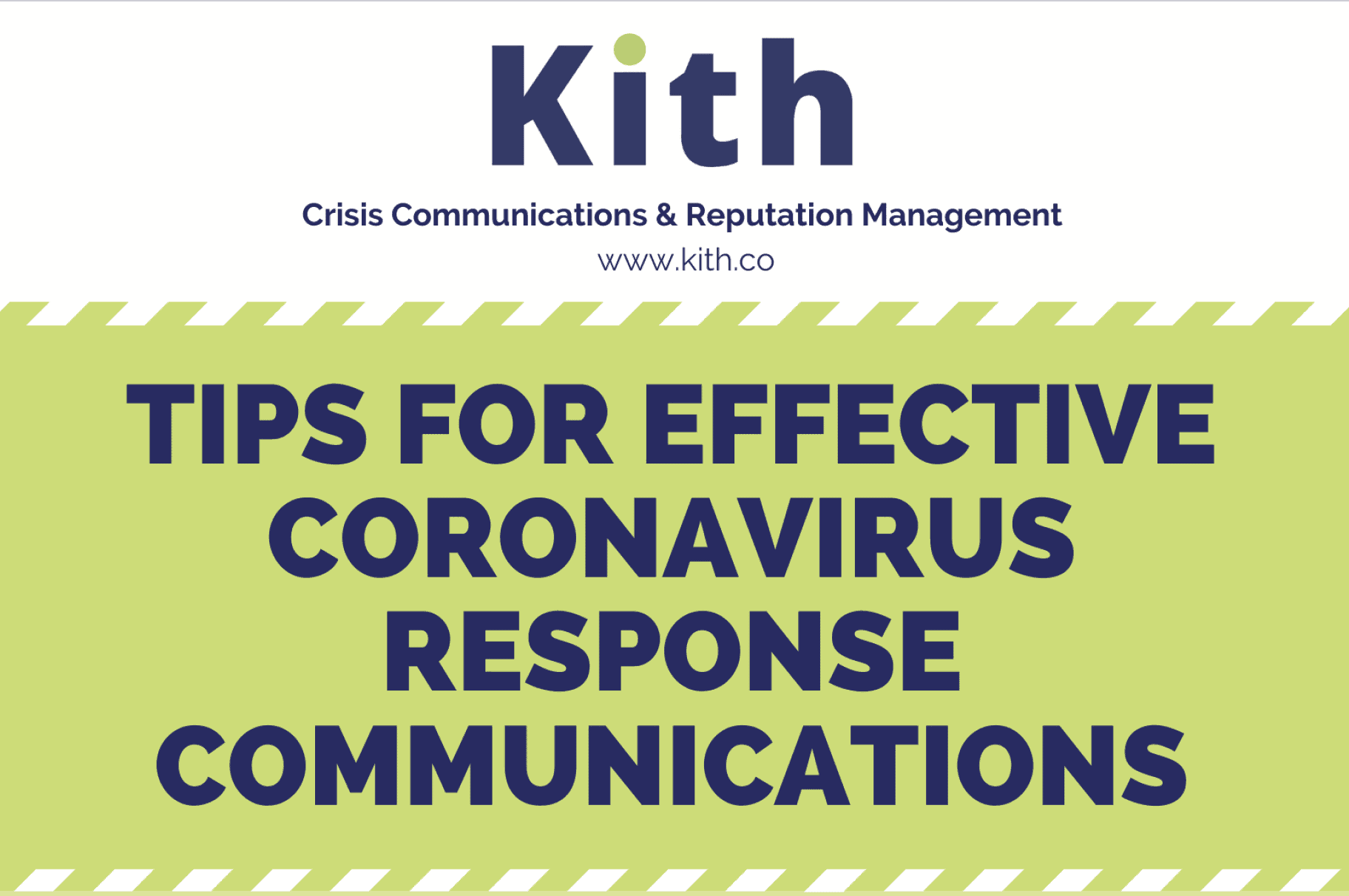We’ve been tracking the spread of the Coronavirus and the cases of COVID-19 around the world and here in the US as we imagine you have. There’s no doubt in our minds of the seriousness of this challenge to individuals, communities, organizations, and countries. We have spent a good bit of time this week and last on the phone with clients as they work through their unique and best approach.
Moreover, we’re conscious that crises like these don’t have edges so there’s no formal declaration of when they start. Nevertheless, we should be clear that we are already in the early stages of this global crisis. Therefore, we should all be taking steps to help prevent the spread of the virus to protect ourselves, our loved ones, our customers and our businesses.
Our colleague Jeff Blaylock has put together these top six areas for consideration to help you plan your response to this threat. Not only are there reminders of what to do from a basic public-health perspective, but we’re also encouraging our friends to think about what they need to do to protect their customers, staff, and businesses as a whole. (Here “Customers” means the people you serve, however, you describe them.) And even though it might seem premature, while you’re ramping up your response, you should also think about what getting back to “business as usual” would look like.
Here’s our top six tips.
Kith’s Top 6 Tips for Effective Coronavirus Response Communications
Offer Assurance
- Let your customers and employees know that your top priority is their health and well-being.
- Tell them what you are doing to stay on top of this situation and that you are closely monitoring news/updates from local, state and national health authorities. (If you have assigned a special team or leader to manage this challenge consider naming them.)
- Share the additional steps you’re taking to protect them (e.g., increased frequency of cleaning/sanitizing public areas, making hand sanitizer available, using video conferencing in lieu of travel, providing work-from-home options).
- Be transparent about your decision-making. Tell them what you’re doing and why.
Follow the Experts
- Follow government guidelines and any specific advisories for your area
- Point your customers to official sources of information about how they can protect themselves and limit the spread of the virus (e.g., Centers for Disease Control’s page on the virus, local and state health authorities.)
Watch the Herd
- Keep an eye on what similarly situated organizations are doing. While there is no need to be in lockstep with them, you must be strategic about following a different path than everyone else.
- Be prepared to explain why you are doing something different whether that’s a sharper reduction in operations beforehand or going back to “business as usual” earlier than your peers.
Assess HR Policies
- Review sick and leave policies, and adjust as necessary, to ensure that employees can stay home if they’re sick or need to care for a family member who is sick.
- Provide options for employees to work remotely or from home.
Be Prepared to Shut Down
- Even if health authorities do not require you to suspend operations, have a plan in place in case you decide temporarily shutting down is the best way to protect the health and well-being of your customers and employees.
Be Prepared to Return to Normal
- Eventually, you will need to go back to “regularly scheduled programming.” Watch for signs that it’s okay to return to business as usual: government notices or cancelations of advisories, shifts in news coverage toward other topics, or significant drops in new cases.
- When you’re going back to normal operations, tell your customers and employees what you’ve done to ensure their continued safety and earn an “all clear” from them.
As a gentle reminder, we’re not doctors or public health experts so always follow the best available advice you’re getting from trusted sources. Nevertheless, we hope that these six considerations will help you prepare your business for what’s to come. Unfortunately, the exact steps will be up to you because each business, each locality and each customer group will be affected differently. That said, the six points above will apply to everyone so these are a great place to start your decision-making.
Remember, this is not a potential threat or a theoretical event: the Coronavirus is spreading around the world today and there are COVID-19 cases in over half the countries of the world.
The numbers infected will have risen substantially between the time we wrote this and when you read it. So please, set aside some time to consider these points with your leadership team and make plans accordingly. This is definitely a time when we’re all in this together. We are planning to share additional insights as this challenge evolves.
Click here to download our infographic tip sheet.



